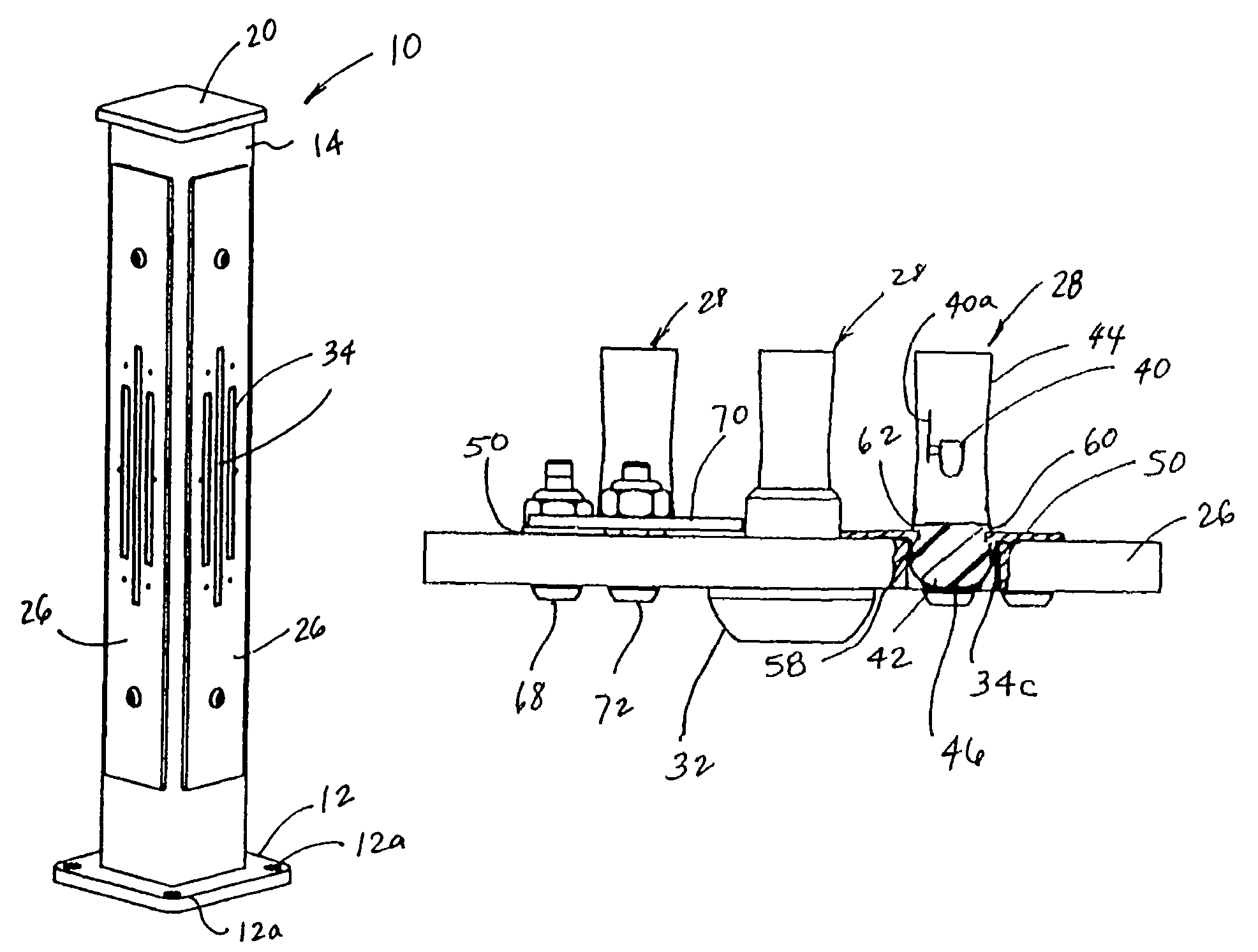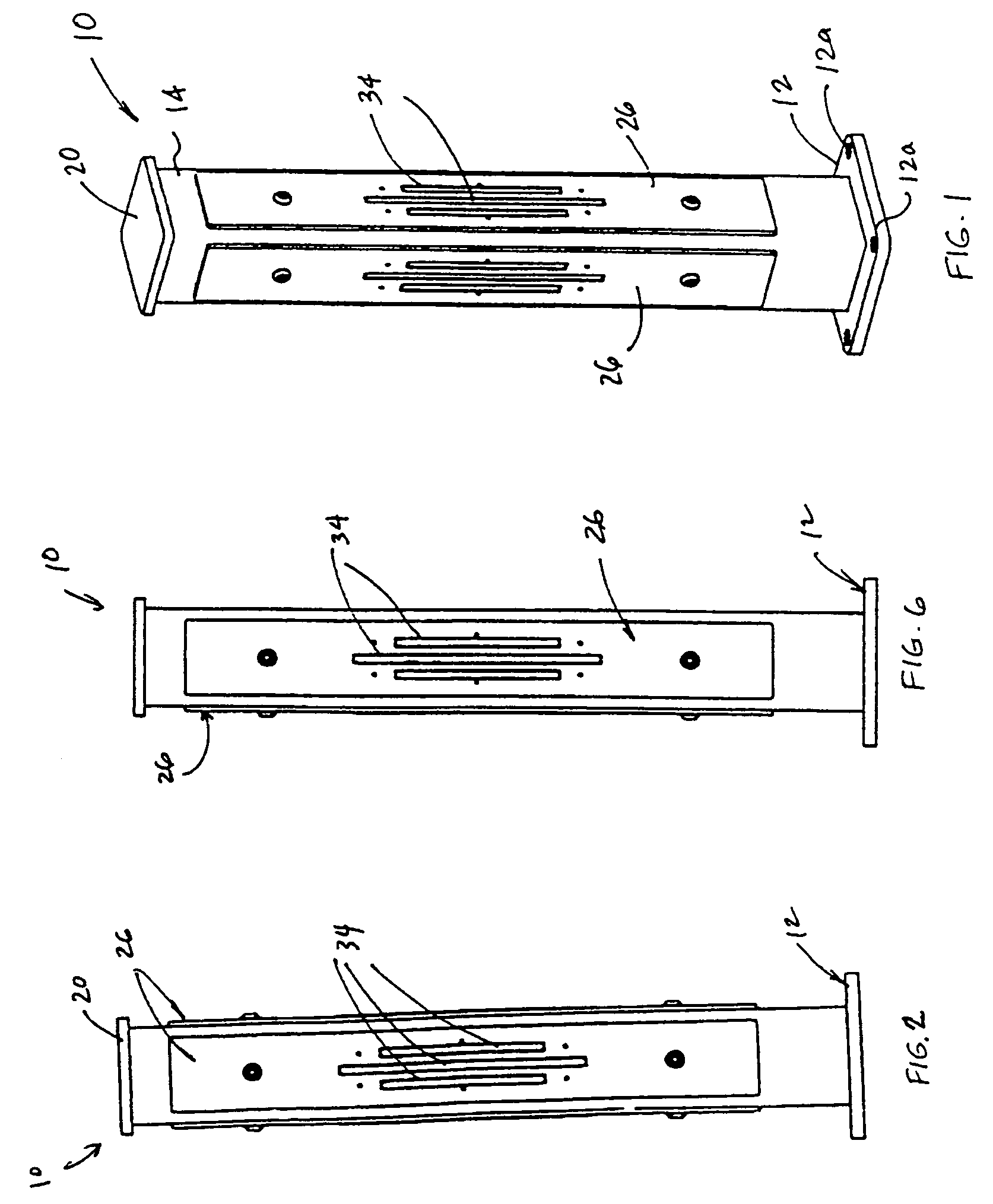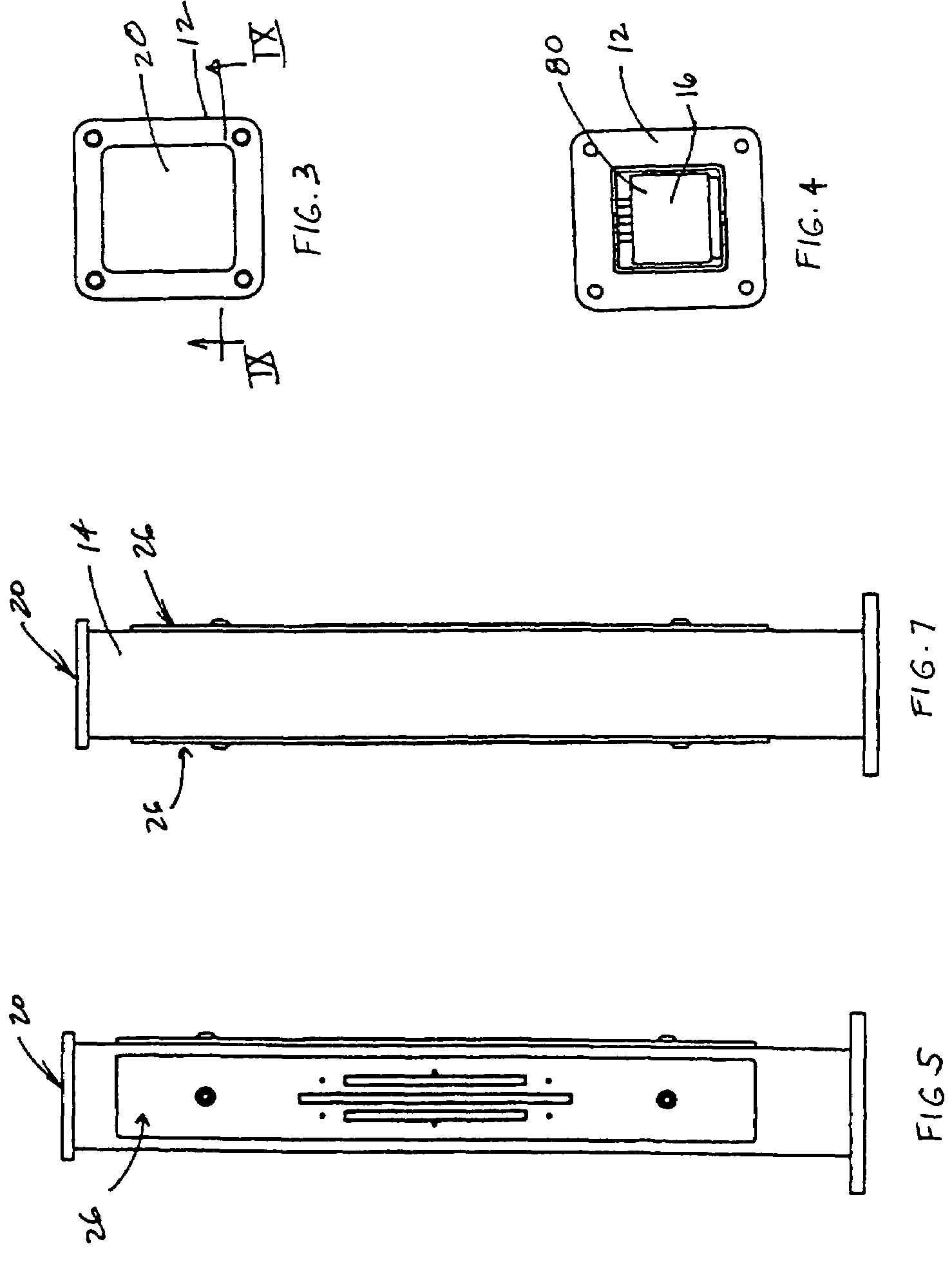Lighted bollard
a technology for lighted posts and bollards, which is applied in the field of lighted posts, can solve the problems of affecting the use of lighted posts, and consuming a considerable amount of energy, so as to reduce or minimize the intrusion of bugs and dirt into the posts and reduce power consumption
- Summary
- Abstract
- Description
- Claims
- Application Information
AI Technical Summary
Benefits of technology
Problems solved by technology
Method used
Image
Examples
Embodiment Construction
[0165]Referring to FIG. 1, the numeral 10 generally designates a lighted post of the present invention. As will be more fully described below, lighted post 10 is particularly useful as a lighted bollard and incorporates the use of light assemblies that use less energy and produce less heat than the lights used in conventional bollards and, further, in a manner to limit the intrusion of bugs and dirt into the post to maintain the aesthetic appearance of the lighted post.
[0166]In the illustrated embodiment, lighted post 10 includes a base 12 and a tubular member 14 that is mounted to base 12 to form a stanchion. It should be understood that the stanchion may be assembled from a variety of other components and further may not require a base. Base 12 is adapted to anchor tubular member 14, for example, to a rigid support surface, such as the ground or to a mat, such as a concrete or asphalt pad or a deck. As best seen in FIG. 1, base 12 includes a plurality of mounting openings 12a for ...
PUM
 Login to View More
Login to View More Abstract
Description
Claims
Application Information
 Login to View More
Login to View More - R&D
- Intellectual Property
- Life Sciences
- Materials
- Tech Scout
- Unparalleled Data Quality
- Higher Quality Content
- 60% Fewer Hallucinations
Browse by: Latest US Patents, China's latest patents, Technical Efficacy Thesaurus, Application Domain, Technology Topic, Popular Technical Reports.
© 2025 PatSnap. All rights reserved.Legal|Privacy policy|Modern Slavery Act Transparency Statement|Sitemap|About US| Contact US: help@patsnap.com



